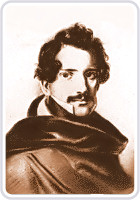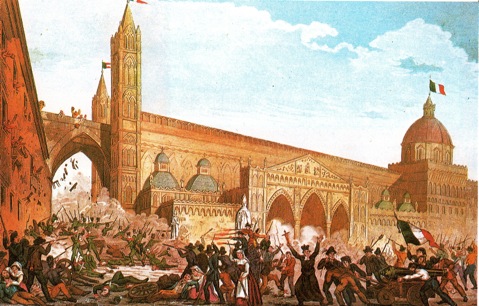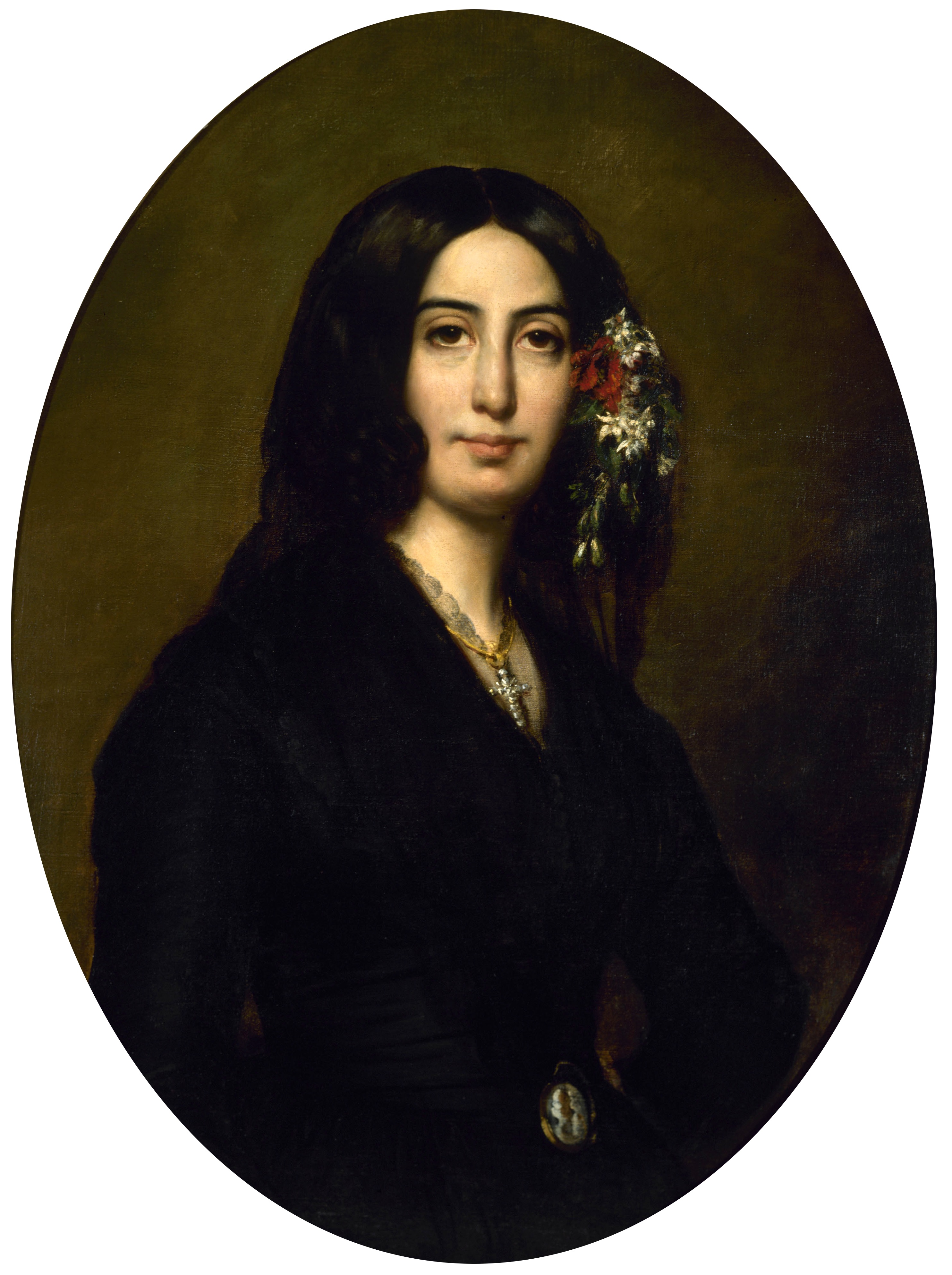|
Trilussa
Carlo Alberto Camillo Mariano SalustriSome biographers as Claudio Rendina report ''Marianum'' as his fourth name (Rendina, p.19) (26 October 1871 – 21 December 1950), known by the pseudonym Trilussa (an anagram of his last name), was an Italian poet, writer and journalist, particularly known for his works in Romanesco dialect. Biography Childhood and education (1871-1886) Carlo Alberto Camillo Salustri was born in Rome on 26 October 1871. His father, Vincenzo, was a waiter from Albano Laziale, his mother, Carlotta Poldi, was a Bologna, Bolognese seamstress. He was the second-born child of the Salustri family and was baptized on 31 October in the San Giacomo in Augusta, Church of San Giacomo in Augusta, when the fourth name, Mariano, was added. A year later, in 1872, at the age of three, his sister, Elisabetta, died of diphtheria. His tormented childhood was affected again two years later, on 1 April 1874, by the death of his father Vincenzo. After the death of her husband, C ... [...More Info...] [...Related Items...] OR: [Wikipedia] [Google] [Baidu] |
Collegio San Giuseppe - Istituto De Merode
The Collegio S. Giuseppe-Istituto de Mérode is a Catholic school of the Institute of the Brothers of the Christian Schools, Brothers of the Christian Schools. It is located in Rome, Italy, in via San Sebastianello 1, at the corner of Piazza di Spagna, in the Rioni of Rome, rione Campo Marzio. It comprises two buildings, the Collegio S. Giuseppe (that occupies the ancient Albergo Serny) and the Istituto de Mérode (built in 1900). It includes a primary school, middle school and high school (Liceo Classico and Scientifico). The private institute is recognized for its high tuition fees, notable location and distinguished alumni network. In addition, it is widely regarded as one of the most prestigious educational institutions in Italy. History The congregation of the Institute of the Brothers of the Christian Schools, Brothers of the Christian Schools was founded by Jean-Baptiste de La Salle in the 17th century. The Collegio S. Giuseppe was founded in 1850 as the "Ecole Français ... [...More Info...] [...Related Items...] OR: [Wikipedia] [Google] [Baidu] |
Romanesco Dialect
Romanesco () is one of the Central Italian dialects spoken in the Metropolitan City of Rome Capital, especially in the core city. It is linguistically close to Tuscan and Standard Italian, with some notable differences from these two. Rich in vivid expressions and sayings, Romanesco is used in a typical diglossic setting, mainly for informal/colloquial communication, with code-switching and translanguaging with the standard language. History First traces The vernacular language of Rome, of which the short Commodilla catacomb inscription () might be considered the earliest attestation, is believed to have been regarded as low-prestige, as can be seen in the 11th-century Saint Clement and Sisinnius inscription, featuring a dialogue wherein the saint is given higher moral ground by juxtaposing his liturgical language with the common speech employed by Sisinnius and his servants. Old Romanesco The 13th century saw the first works of literature written in Roman vernacular, s ... [...More Info...] [...Related Items...] OR: [Wikipedia] [Google] [Baidu] |
Senators For Life In Italy
Senators for life in Italy () are members of the Italian Senate who are either appointed, limited in number up to five, by the Italian president "for outstanding patriotic merits in the social, scientific, artistic or literary field" or are former presidents and thus senators for life '' ex officio''. Every president of the Italian Republic has made at least one appointment of a senator for life, with the exception of Oscar Luigi Scalfaro (since in his term there were more than five). President Giorgio Napolitano appointed Professor Mario Monti on 9 November 2011 and conductor Claudio Abbado, researcher Elena Cattaneo, architect Renzo Piano and Nobel-laureate physicist Carlo Rubbia on 30 August 2013. The president who appointed the highest number of senators for life was Luigi Einaudi, who made eight appointments during his term. Senators for life can decide not to be part of any parliamentary group, as opposed to elected senators who, if not affiliated with any specific p ... [...More Info...] [...Related Items...] OR: [Wikipedia] [Google] [Baidu] |
Trastevere - Piazza Trilussa - Monumento A Trilussa 1531
Trastevere () is the 13th of Rome, Italy. It is identified by the initials R. XIII and it is located within Municipio I. Its name comes from Latin (). Its coat of arms depicts a golden head of a lion on a red background, the meaning of which is uncertain. History In Rome's Regal period (753–509 BC), the area across the Tiber belonged to the Etruscans: the Romans named it ''Ripa Etrusca'' (Etruscan bank). Rome conquered it to gain control of and access to the river from both banks, but was not interested in building on that side of the river. In fact, the only connection between Trastevere and the rest of the city was a small wooden bridge called the '' Pons Sublicius'' (English: 'bridge on wooden piles'). By the time of the Republic BC, the number of sailors and fishermen making a living from the river had increased, and many had taken up residence in Trastevere. Immigrants from the East also settled there, mainly Jews and Syrians. The area began to be considered part of ... [...More Info...] [...Related Items...] OR: [Wikipedia] [Google] [Baidu] |
Italian Fascism
Italian fascism (), also called classical fascism and Fascism, is the original fascist ideology, which Giovanni Gentile and Benito Mussolini developed in Italy. The ideology of Italian fascism is associated with a series of political parties led by Mussolini: the National Fascist Party (PNF), which governed the Kingdom of Italy from 1922 until 1943, and the Republican Fascist Party (PFR), which governed the Italian Social Republic from 1943 to 1945. Italian fascism also is associated with the post–war Italian Social Movement (MSI) and later Italian Neo-fascism, neo-fascist political organisations. Italian fascism originated from ideological combinations of ultranationalism and Italian nationalism, national syndicalism and revolutionary nationalism, and from the militarism of Italian irredentism to regain "lost overseas territories of Italy" deemed necessary to restore Italian nationalist pride.Aristotle A. Kallis. ''Fascist ideology: territory and expansionism in Italy and Ger ... [...More Info...] [...Related Items...] OR: [Wikipedia] [Google] [Baidu] |
Berlin
Berlin ( ; ) is the Capital of Germany, capital and largest city of Germany, by both area and List of cities in Germany by population, population. With 3.7 million inhabitants, it has the List of cities in the European Union by population within city limits, highest population within its city limits of any city in the European Union. The city is also one of the states of Germany, being the List of German states by area, third smallest state in the country by area. Berlin is surrounded by the state of Brandenburg, and Brandenburg's capital Potsdam is nearby. The urban area of Berlin has a population of over 4.6 million and is therefore the most populous urban area in Germany. The Berlin/Brandenburg Metropolitan Region, Berlin-Brandenburg capital region has around 6.2 million inhabitants and is Germany's second-largest metropolitan region after the Rhine-Ruhr region, as well as the List of EU metropolitan areas by GDP, fifth-biggest metropolitan region by GDP in the European Union. ... [...More Info...] [...Related Items...] OR: [Wikipedia] [Google] [Baidu] |
Belle Époque
The Belle Époque () or La Belle Époque () was a period of French and European history that began after the end of the Franco-Prussian War in 1871 and continued until the outbreak of World War I in 1914. Occurring during the era of the French Third Republic, it was a period characterised by optimism, enlightenment, romanticism, regional peace, economic prosperity, conservatism, nationalism, colonial expansion, and technological, scientific and cultural innovations. In this era of France's cultural and artistic climate (particularly in Paris of that time), the arts markedly flourished, and numerous masterpieces of literature, music, theatre and visual art gained extensive recognition. The Belle Époque was so named in retrospect, when it began to be considered a continental European " Golden Age" in contrast to the horrors of the Napoleonic Wars and World War I. The Belle Époque was a period in which, according to historian R. R. Palmer, " European civilisation a ... [...More Info...] [...Related Items...] OR: [Wikipedia] [Google] [Baidu] |
Café-chantant
(; French: lit. 'singing café'), , or is a type of musical establishment associated with the Belle Époque in France. The music was generally lighthearted and sometimes risqué or even bawdy but, as opposed to the cabaret tradition, not particularly political or confrontational. Although there is much overlap of definition with cabaret, music hall, vaudeville, etc., the was originally an outdoor café where small groups of performers performed popular music for the public. National variations The tradition of such establishments as a venue for music has its origins in Paris and London of the eighteenth century. Such establishments gained their widest popularity in the late nineteenth and early twentieth centuries with the growth of various other national "schools" of ''cafè chantant'' (besides French). Thus, one spoke of an Italian café chantant, German café chantant, or Austrian café chantant. For example, at least one Victorian era premises in England was known ... [...More Info...] [...Related Items...] OR: [Wikipedia] [Google] [Baidu] |
Francesco Crispi
Francesco Crispi (4 October 1818 – 11 August 1901) was an Italian patriot and statesman. He was among the main protagonists of the Risorgimento, a close friend and supporter of Giuseppe Mazzini and Giuseppe Garibaldi, and one of the architects of Italian unification in 1860.Nation-building in 19th-century Italy: the case of Francesco Crispi Christopher Duggan, History Today, 1 February 2002 Crispi served as for six years, from 1887 to 1891, and again from 1893 to 1896, and was the first prime minister from |
Satire
Satire is a genre of the visual, literary, and performing arts, usually in the form of fiction and less frequently non-fiction, in which vices, follies, abuses, and shortcomings are held up to ridicule, often with the intent of exposing or shaming the perceived flaws of individuals, corporations, government, or society itself into improvement. Although satire is usually meant to be humorous, its greater purpose is often constructive social criticism, using wit to draw attention to both particular and wider issues in society. Satire may also poke fun at popular themes in art and film. A prominent feature of satire is strong irony or sarcasm—"in satire, irony is militant", according to literary critic Northrop Frye— but parody, burlesque, exaggeration, juxtaposition, comparison, analogy, and double entendre are all frequently used in satirical speech and writing. This "militant" irony or sarcasm often professes to approve of (or at least accept as natural) th ... [...More Info...] [...Related Items...] OR: [Wikipedia] [Google] [Baidu] |
Madrigal
A madrigal is a form of secular vocal music most typical of the Renaissance (15th–16th centuries) and early Baroque (1580–1650) periods, although revisited by some later European composers. The polyphonic madrigal is unaccompanied, and the number of voices varies from two to eight, but the form usually features three to six voices, whilst the metre of the madrigal varies between two or three tercets, followed by one or two couplets. Unlike verse-repeating strophic forms sung to the same music, most madrigals are through-composed, featuring different music for each stanza of lyrics, whereby the composer expresses the emotions contained in each line and in single words of the poem being sung. Madrigals written by Italianized Franco–Flemish composers in the 1520s partly originated from the three-to-four voice frottola (1470–1530); partly from composers' renewed interest in poetry written in vernacular Italian; partly from the stylistic influence of the French chanson; ... [...More Info...] [...Related Items...] OR: [Wikipedia] [Google] [Baidu] |
Pseudonym
A pseudonym (; ) or alias () is a fictitious name that a person assumes for a particular purpose, which differs from their original or true meaning ( orthonym). This also differs from a new name that entirely or legally replaces an individual's own. Many pseudonym holders use them because they wish to remain anonymous and maintain privacy, though this may be difficult to achieve as a result of legal issues. Scope Pseudonyms include stage names, user names, ring names, pen names, aliases, superhero or villain identities and code names, gamertags, and regnal names of emperors, popes, and other monarchs. In some cases, it may also include nicknames. Historically, they have sometimes taken the form of anagrams, Graecisms, and Latinisations. Pseudonyms should not be confused with new names that replace old ones and become the individual's full-time name. Pseudonyms are "part-time" names, used only in certain contexts: to provide a more clear-cut separation between one's privat ... [...More Info...] [...Related Items...] OR: [Wikipedia] [Google] [Baidu] |








